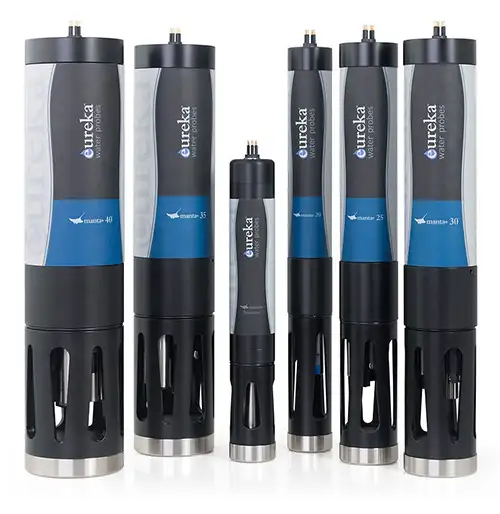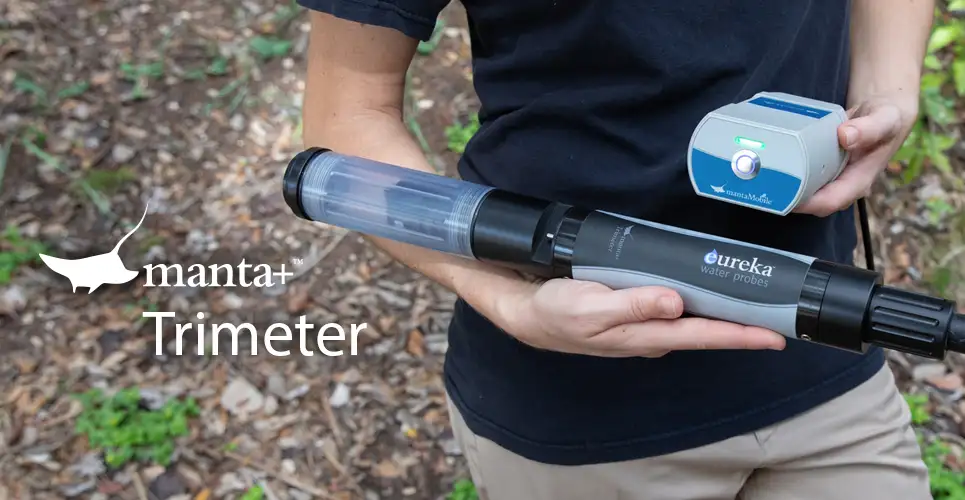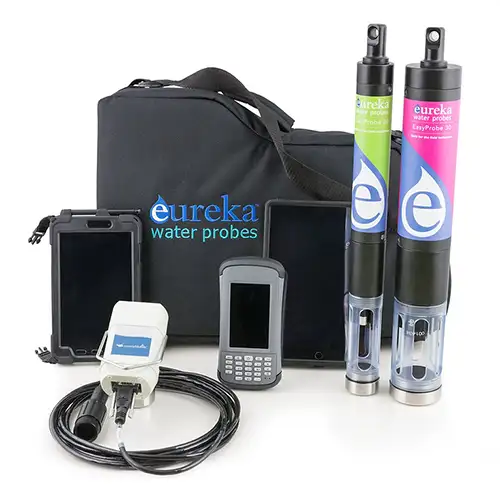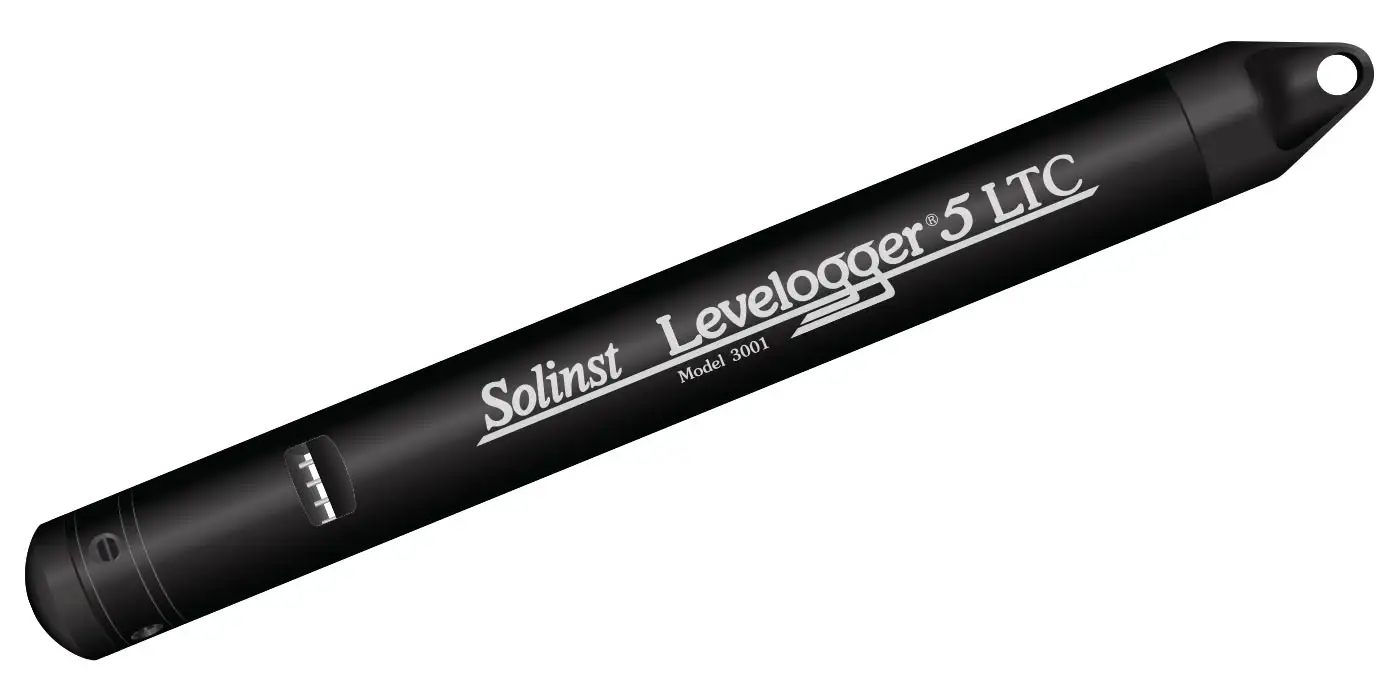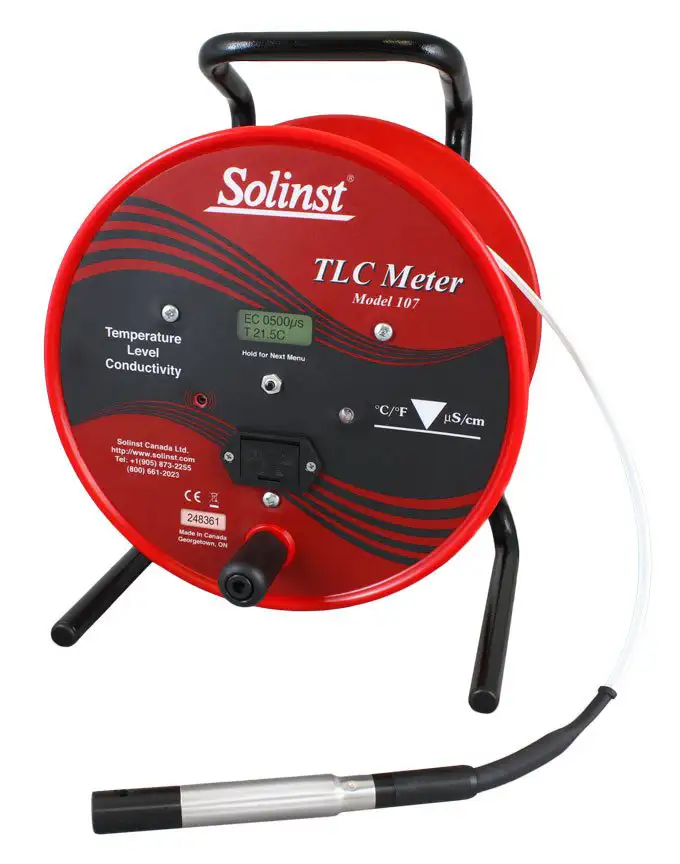Conductivity Sensors: Water Quality Monitoring
Solinst Eureka
2113 Wells Branch Pkwy, Suite 4400
Austin, TX, USA
78728
Tel: +1 512-302-4333
Fax: +1 512-251-6842
email: [email protected]
Water Quality Probes
Solinst Eureka, a global leader in the design and manufacture of multiparmeter water quality sondes.
Solinst Field Services
Safeguard your project’s success and mitigate any potential for downtime or additional costs.
What is conductivity?
Conductivity is the ability of water to conduct electricity. This conduction requires ions in the water to be charge carriers. Pure water contains no ions (aside from the occasional rogue water molecule), and so is a very poor conductor of electricity. But as water picks up chemical salts, those salts add ions to the water when they dissolve. So as the ionic strength of the water rises, so does conductivity – the “saltier” the water, the higher the conductivity.
Note that a conductivity measurement does not necessarily tell you the concentration of ions in the water, because different ions have different contributions to conductivity. Large, ungainly ions, like acetate, do not help conduct electricity well. Small, fast ions, like H+, make a much higher per-ion contribution to conductivity. Since natural waters are usually ever-changing mixtures of ions, a conductivity reading is only a relative measurement of ion concentration.
Salinity is often calculated from conductivity by assuming that the water is very similar in chemical constituency to sea water. In sea water, a conductivity of 55,000 µS/cm is roughly the same thing as a salinity of 35 PSS (PSS is the practical salinity scale, which has replaced the traditional ppt salinity units). Salinity is technically defined only for small dilutions and concentrations of salt water, and so is seldom used in fresh-water work.
Why is conductivity important in water quality monitoring?
From a chemical standpoint, conductivity readings can be used to monitor the stability of a water body. An unchanging conductivity usually means that no chemicals are being added to, or subtracted from, the water. A spike in conductivity can indicate an increase in ions from a pollution source, such as a waste-water outfall, agricultural runoff, or tidal intrusion. A dip in conductivity can indicate a reduction of chemical inputs and/or an increase in fresh-water input (from a rainfall event, for instance).
Conductivity readings can also be used to judge biological health because some plant and animal species are sensitive to high, or low, conductivities. Oysters, for instance, do not do well in significantly diluted sea water. Fresh-water game fish do not do well in salty waters.
Conductivity readings can also be used inferentially. For instance, it is common in monitoring fresh-water beaches to assume that a sudden increase in conductivity is due to waste-water contamination or rainfall run-off – both of which are usually associated with high bacteria counts. Thus, the conductivity spike may be reason to close the beaches.
Finally, conductivity readings are used to correct water-level measurements and dissolved-oxygen readings. Increasing conductivity means increasing water density, so water-level measurements must be decreased to compensate. Increasing conductivity also reduces the solubility of oxygen in water, so calculations of percent-saturation of oxygen must be increased to compensate.
How is Conductivity Measured?
Conductivity is most often measured with toroidal sensors or four-electrode sensors. Toroidal sensors are seldom found in multiprobes because they have poor sensitivity at low conductivities. Four-electrode sensors operate by measuring the current required to maintain a fixed voltage between two pairs of electrodes separated by a fixed geometry of water. Either method is more than adequate for most studies of natural waters.
How do you calibrate conductivity sensors?
Conductivity sensors are calibrated with one standard, and that standard is almost always a known concentration of potassium chloride (KCl). The value at which calibration is made depends on the application – for very fresh waters, a low conductivity standard is best, and vice-versa. Choose a calibration standard that is a bit higher than the highest reading you expect to see in the field.
What other parameters influence conductivity measurements?
Conductivity is a direct measurement of electrical conductivity, and electrical conductivity varies with water temperature. Water at 15 °C has a lower conductivity than the same water at 30 °C. To make conductivity readings easier to compare, it is customary to “correct” the readings to 25 °C – that is, report the conductivity as it would be if the water temperature were changed to 25 °C. Readings corrected to 25 °C are referred to as “specific conductance” rather than conductivity.

Conductivity Sensors for Water Quality Sondes
- Range
0 to 275 mS/cm - Accuracy
±0.5% of reading or ±1 w.i.g., 0 to 5000 µS/cm
±1% of reading, ±0.001, 0 to 100mS/cm
±0.5% available, 0 to 100mS/cm
±2%, 100 mS/cm to 275 mS/cm - Resolution
0.001 (mS/cm), 0.1 µS/cm - Units
mS/cm, or µS/cm - Calibration
KCl standards, one point - Maintenance
cleaning and calibration - Sensor Life
5+ years - Sensor Type
four-electrode; graphite electrodes
How do conductivity sensors perform in the field?
Conductivity sensors will perform to specification for years, with proper calibrations, and by keeping the sensor reasonably clean of gunk from the water.
Features of Solinst Eureka’s conductivity sensor.
Solinst Eureka’s conductivity sensor is easy to clean, and the flow-through design of the Solinst Eureka conductivity sensor is superior to those with electrodes partially hidden in a recess. These “well type” sensors used in some multiprobes, restrict the flow of the sample water, and encourage biological fouling. They are also more difficult to clean.
Solinst Eureka’s conductivity sensors are the best of their kind for portable, water-quality instruments. Conductivity sensors may be installed in MantaPlus multiprobes along with other sensors such as fluorometers, dissolved oxygen, pH, ISE’s, and turbidity. If for example, only conductivity, depth, and temperature are needed, these sensors may be installed on a small probe such as the Trimeter. Solinst Eureka multiparameter sondes can be configured with battery backs for autonomous self-powered deployment, used with field displays for site-to-site spot checking, or connected to data telemetry stations for real-time remote monitoring. Solinst Eureka water quality sondes are portable, durable, and cost-effective.
Related Products
Manta Series Water Quality Probes
Solinst Eureka offers the largest selection of water quality sensor technologies in the industry. So in addition to standard configurations, each probe may be customized for your specific application. Pick sensors of your choice to fully populate larger probes, or add a battery pack to convert a probe to a logging device.
Manta Trimeter Water Quality Probe
The Trimeter holds any one sensor* from the Sensor Parameters list, Plus temperature and depth sensors (both are optional). For example, a Trimeter configuration could be turbidity, temperature, and depth. Another example could be DO and temperature.
EasyProbe: Water Quality Sondes
The EasyProbe, by Solinst Eureka, is a high-performance, cost-effective water quality monitor. It's ideal for spot-checking, remote telemetry, education, research, aquaculture, and more. The EasyProbe20 includes sensors for temperature, dissolved oxygen, conductivity, and pH, while the EasyProbe30 adds a turbidity sensor. Eureka multiprobes are known for their reliability, with a three-year warranty covering all sensors, and have the lowest maintenance costs in the industry.
Water Level, Temperature & Conductivity Datalogging
The Levelogger 5 LTC measures and logs water level fluctuations, temperature and conductivity. It is programmed to record at intervals as often as 2 seconds. It includes an 8-year battery, memory for 100,000 sets of readings, and comes in 6 pressure ranges. A PFAS-free coating (inside and out) provides superior corrosion and abrasion resistance.
TLC Meter – Measure Accurate Temperature, Level & Conductivity
A TLC Meter provides accurate, stable temperature and conductivity measurements, displayed on a convenient LCD display for easy reading. Static water level and depth of readings are read off Solinst flat tape, which is precisely laser-marked every mm or 1/100 ft. Tape lengths are available to 300 m (1000 ft).

